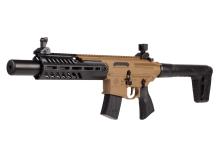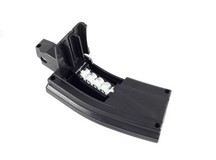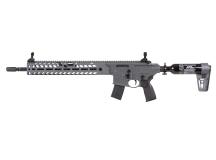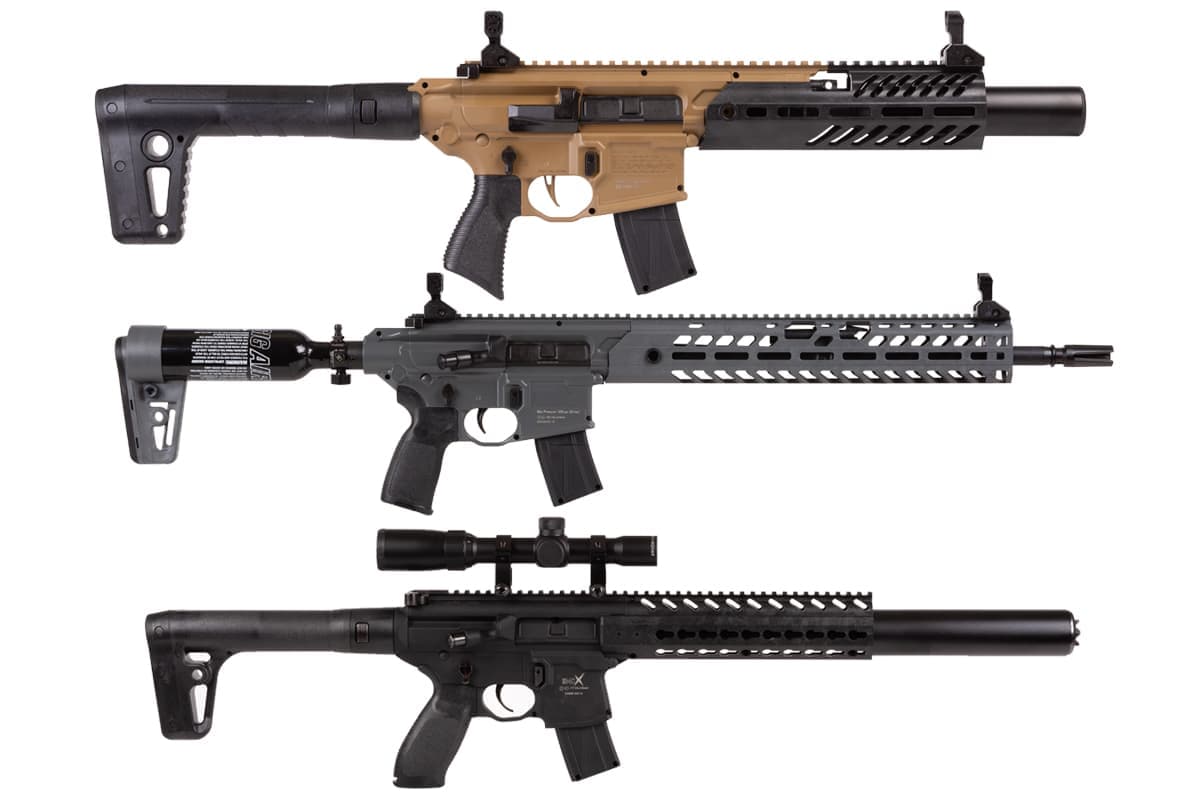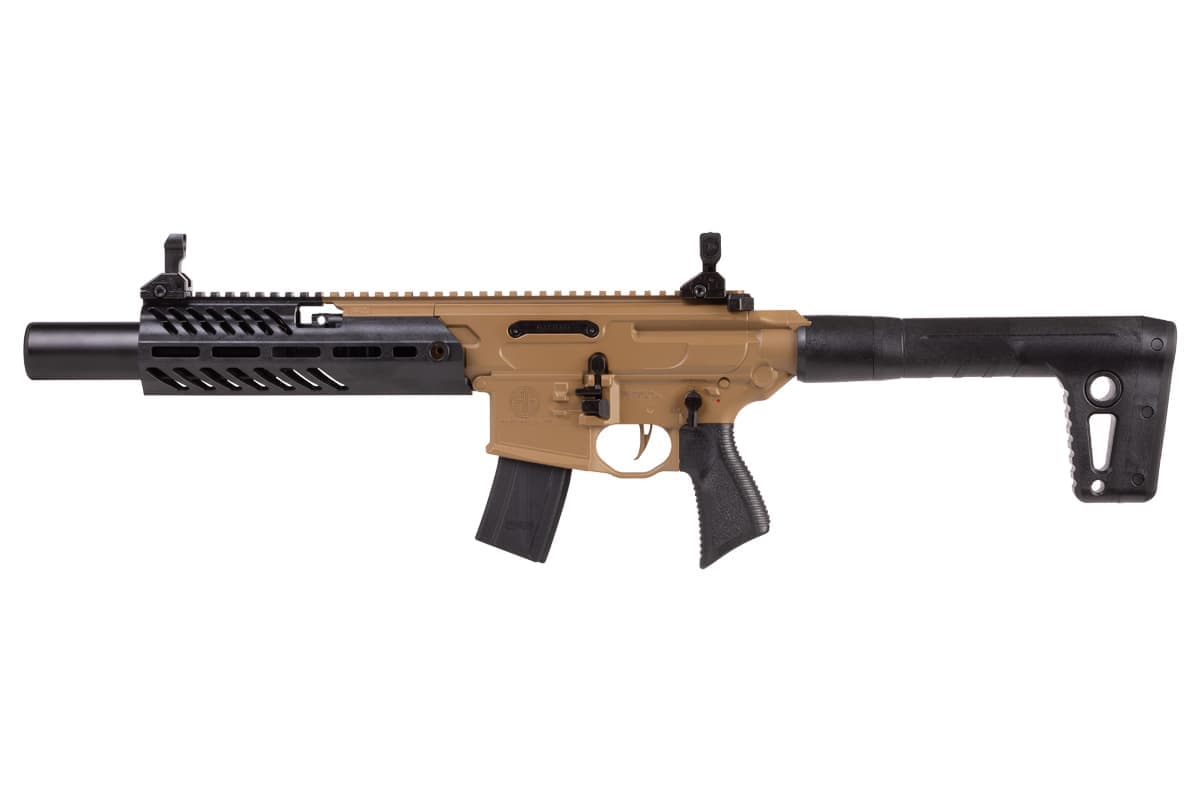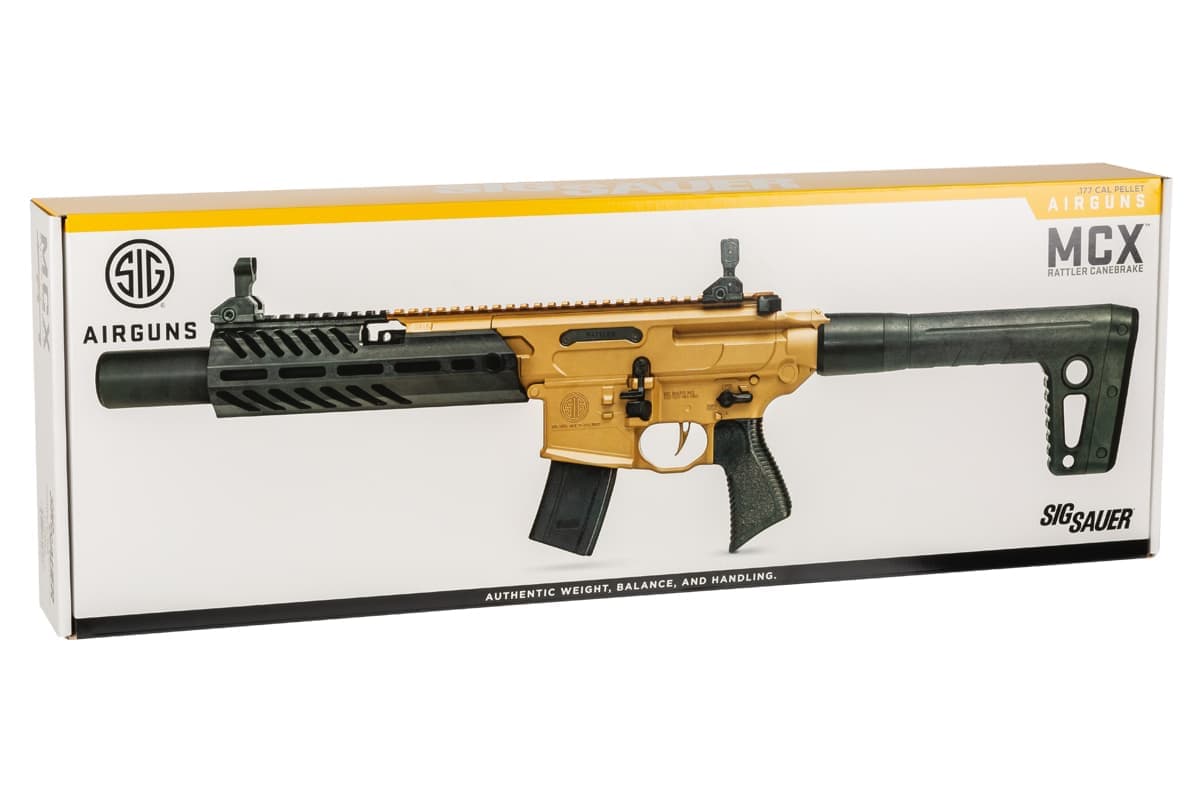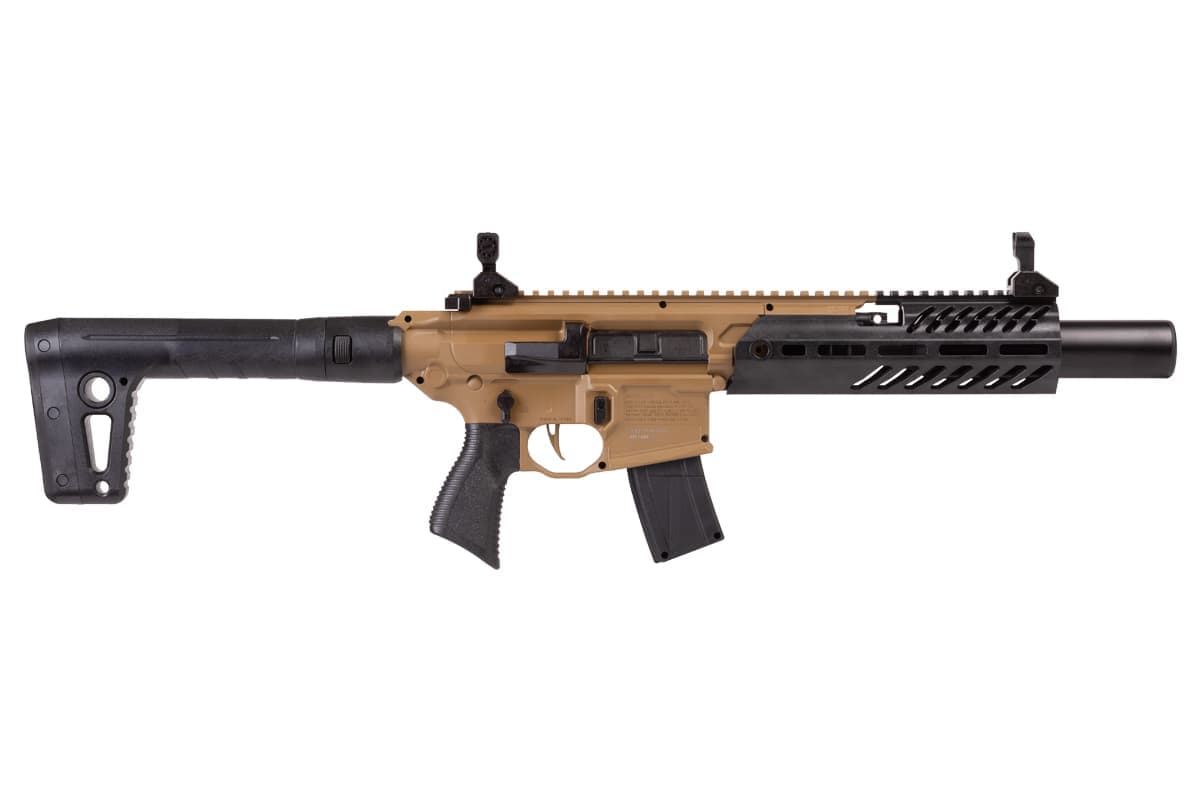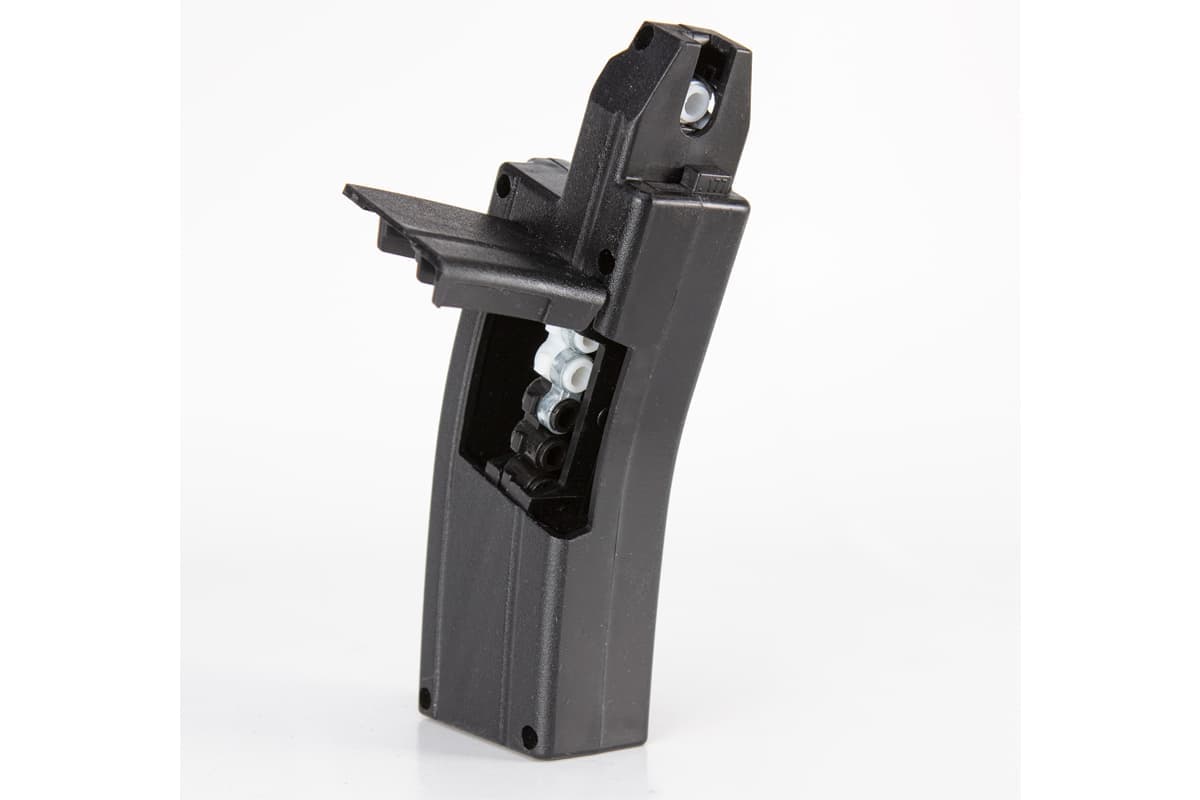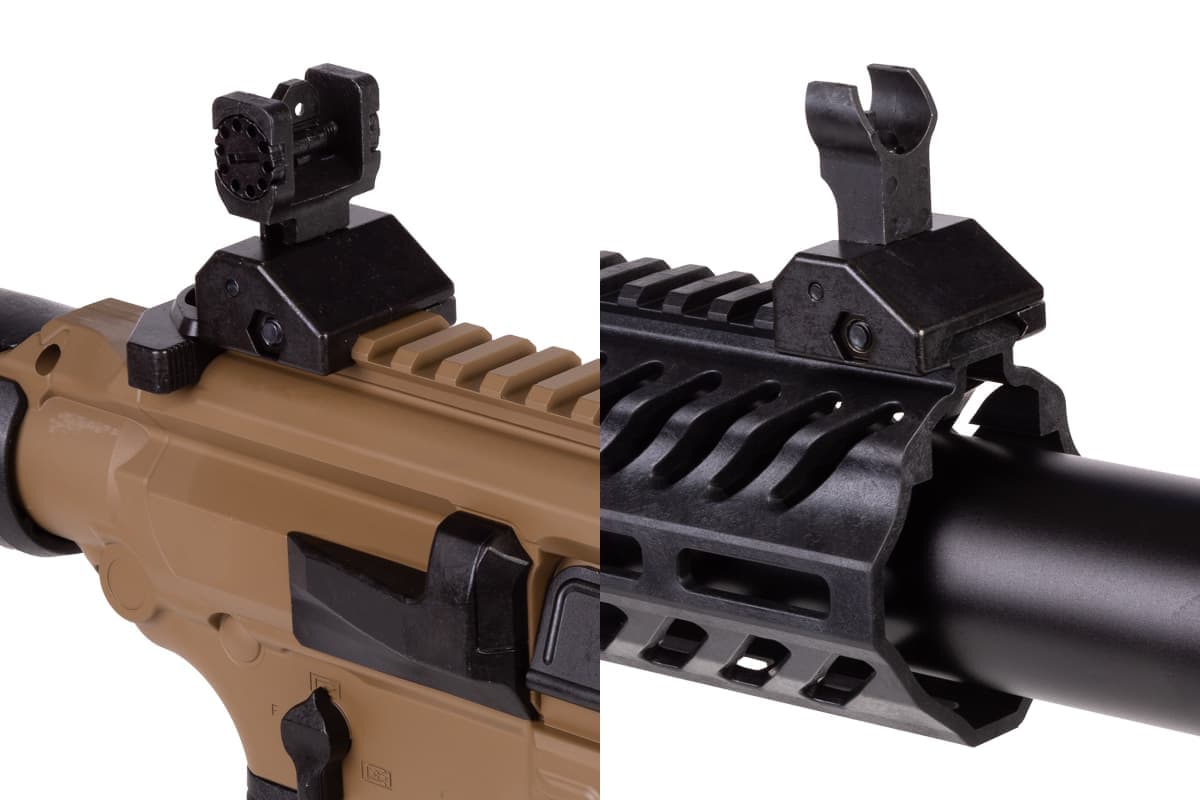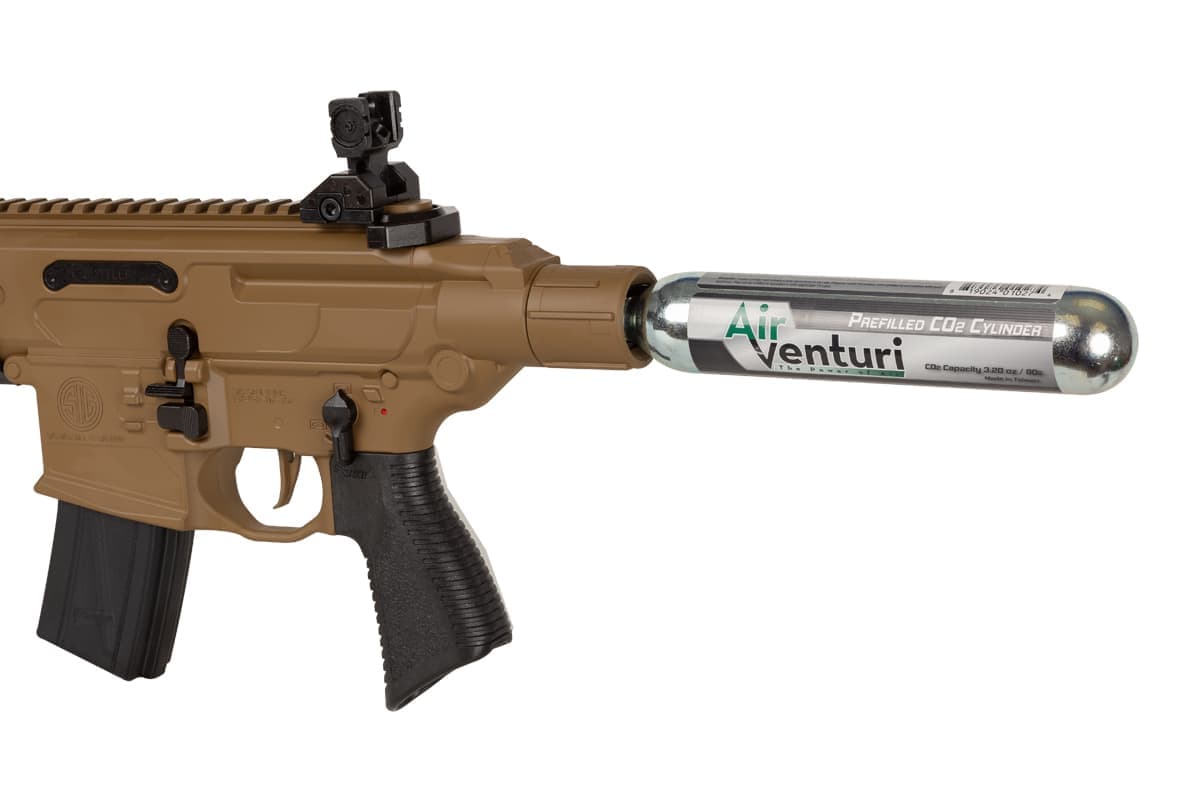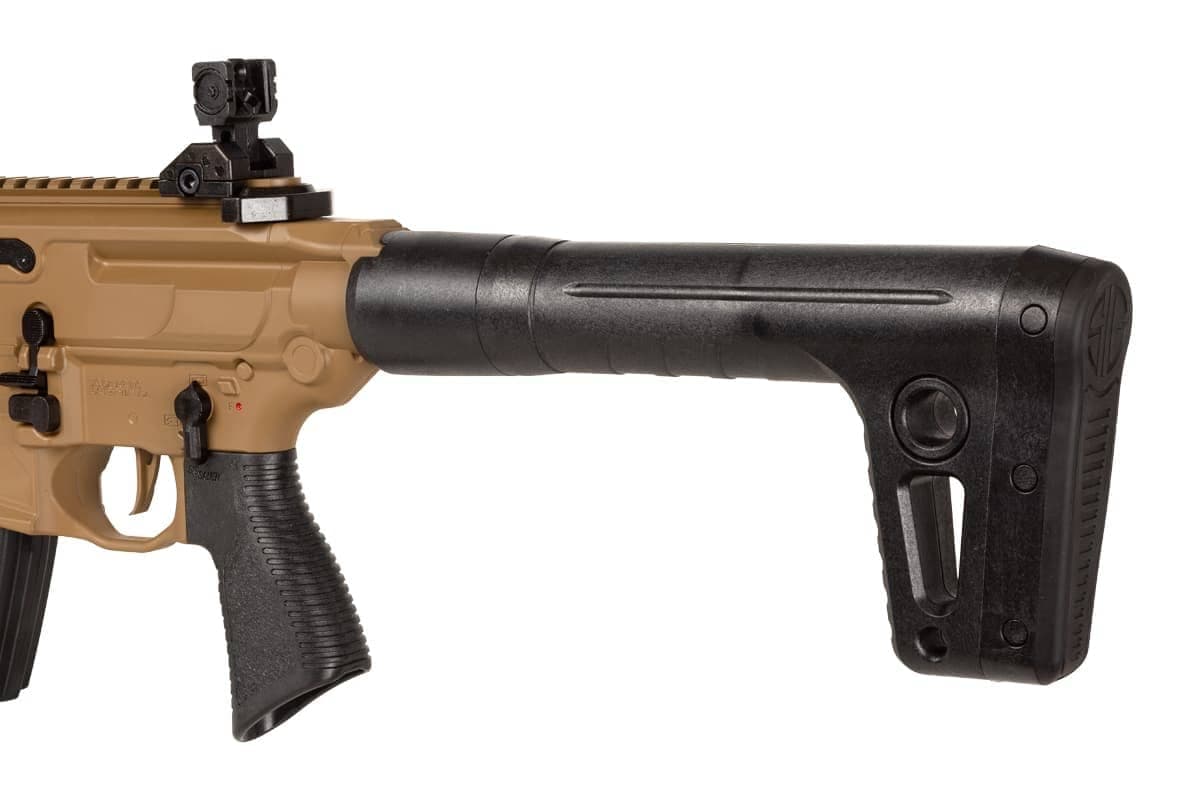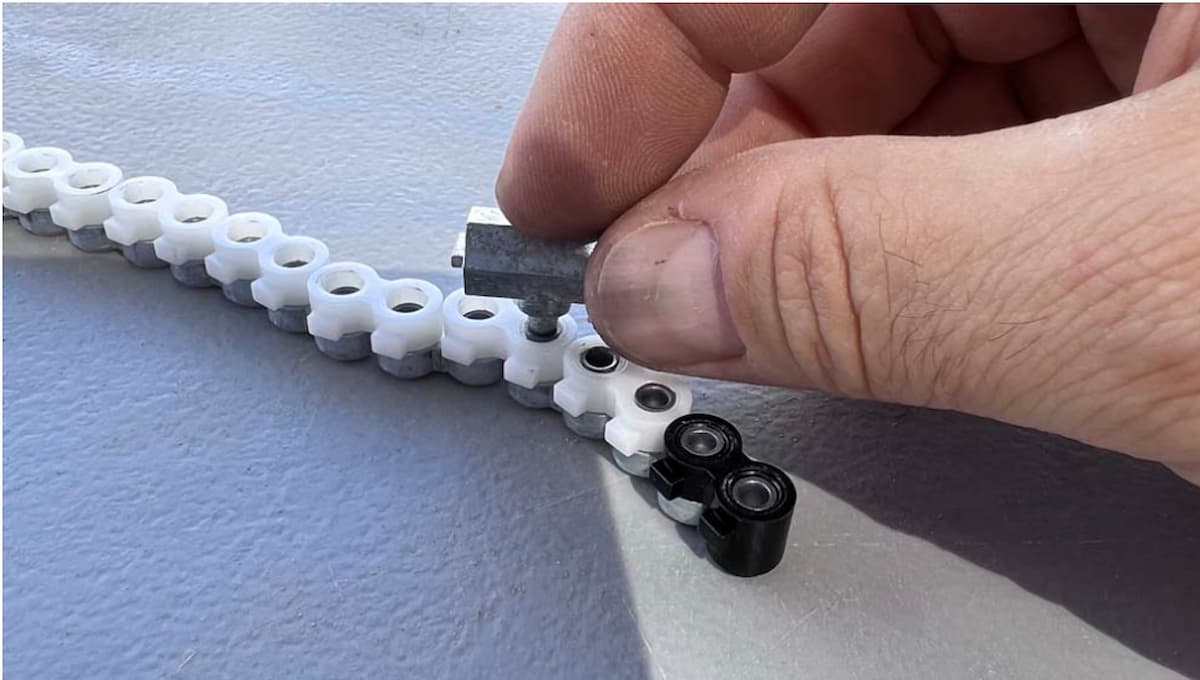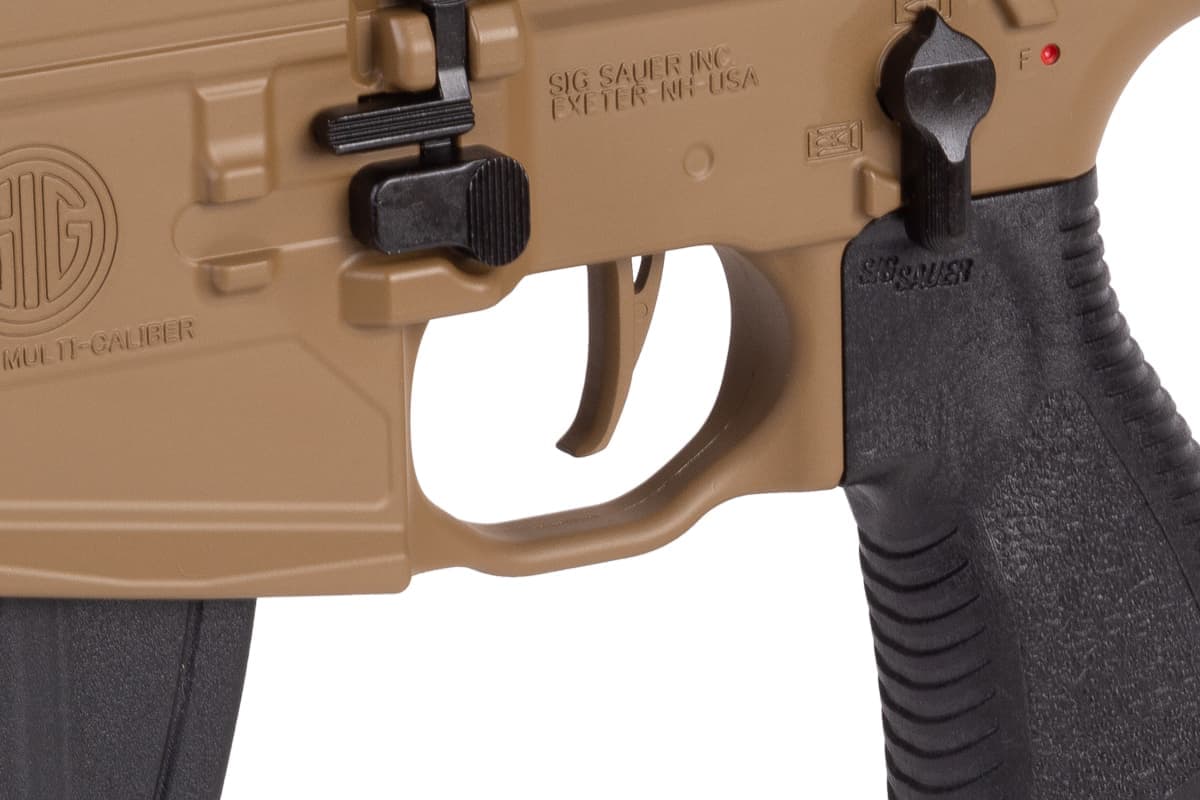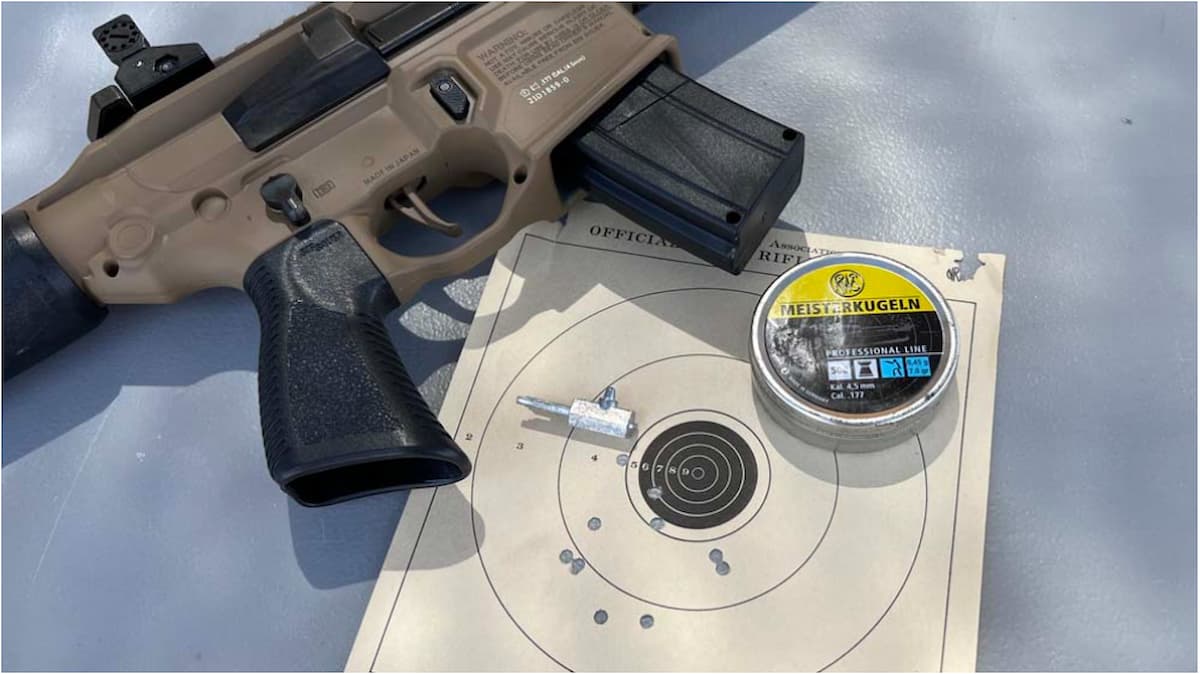Definitive Guide to Sig Sauer MCX
SIG is a premier firearms manufacturer. So it makes sense that their airguns follow suit. The MCX line comes in various models that correspond to actual firearm models. The SIG MCX airgun models feature all-metal construction, 30-round magazines, and realistic weight and feel. For those looking to train with an airgun that has the same weight and feels like the real thing, SIG's MCX variants are some of the best on the market.
All the MCX models, except for the SIG Virtus, operate via an 88 or 90-gram CO2 bottle and are chambered for .177 pellets. The SIG Virtus varies because it is a PCP with a regulated tank and fires .22 caliber pellets. We will dig into the specific operation and other details as we work through this definitive guide on the SIG MCX.
Basic Anatomy
This article will focus on the Rattler Canebrake CO2 pellet rifle, a shorter variant that is close to being a 1-to-1 replica of the actual firearm. As soon as you unpack the Rattler, you'll be impressed at its heft and build quality. This is something consistent with all the MCX airguns.
In the box, you will find the rifle, a 30-round magazine, buttstock, and a sight adjustment tool that doubles as a pellet seating tool. We can't get over how well built all the SIG MCX airguns feel, and the Rattler Canebrake is no exception. Of course, we've looked at other AR-style airguns, some of which are built very well, but the MCX line is in a class by itself.
As we look at the Rattler Canebrake air rifle, you'll find a composite foregrip complete with M-LOK channels that are just itching for accessories like lights, lasers, and possibly an M-LOK bipod. A top Picatinny rail runs the entire length of the gun from just behind the faux suppressor to the back of the receiver.
The SIG firearm version features a lightweight foldable stock. This is not possible on the airgun model as the buttstock is what covers the 88 or 90-gram CO2 bottle used to power the MCX Rattler. The plastic stock is not adjustable as you would expect from a typical AR variant. Rather, it slides over the CO2 bottle and clicks securely into place.
One of the stars of the show has to be the 30-round belt-fed magazine system. The belt is easily removed from the side of the magazine. Loading pellets, while tedious, is not hard at all. For those who want to use the MCX for training, extra magazines are readily available.
SIG includes a set of flip-up AR-Style open sights that could have worked better, at least on our sample. They are all metal and allow for a full range of adjustments. Unfortunately, our sample model did not have enough vertical adjustment to raise the shot into the center. We'll get to that shortly when we talk accuracy. Fortunately, the open sights are more for "combat grouping" than precision match shooting. If you want to get the most accuracy out of your SIG MCX Rattler Canebrake, make use of the rail and mount an optic. Our recommendation would be something like the Hawke Airmax 30 Compact.
Setup and Operation
Unlike other AR-Style CO2 replica airguns, the SIG chose to ditch the typical dual 12-gram CO2 setup in favor of the larger 88 or 90 Gram CO2 canisters. The result is more shots at optimal velocity. By connecting the CO2 into the rear of the platform and then using the buttstock to cover it, SIG maintained the clean lines and look of their MCX line of firearms. We recommend using a drop of silicone on the end of each canister to help maintain the seals. Simply screw it into the end of the gun and slide the buttstock over the cylinder, locking it into place. There's zero wiggle once locked in. You're good to go.
Loading the magazine takes time, but it's very simple. Opening the side of the mag provides access to the 30-round belt. It pulls out easily. Make a note of the nub that runs in the channel, as that will help you remember which way to insert the pellets. Insert the pellets nose first, then use the tool to finish seating the pellet into the belt. Once done, feed the belt back into the magazine, shut the door, and insert it into the rifle.
There is a t-bolt cocking handle at the rear of the receiver that will cock the hammer. You may need to "charge" the gun before taking your first shot. The CO2 in the system will reset the hammer but does not rotate the belt in the mag, which is handled when you pull the trigger. This makes for a fairly stiff and inconsistent trigger pull. However, we will say that there have been some noticeable improvements to the useability of this system. The Rattler Canebrake variant delivered a trigger pull ranging from 4 pounds 11 ounces to 6 pounds 3 ounces. While that sounds very heavy, it's about half what we remember from early MCX models. If this change is consistent across all modem SIG MCX variants, we'll be excited to try more.
The MCX Rattler Canebrake operated without issue throughout all our testing. This is another pleasant surprise given our past experiences. Not only were we able to take slow, deliberate shots for our accuracy testing, but we were also able to take double tap, triple tap, and full-out "rip the mag" as fast as you can pull the trigger, shots without a single jam or misfire. So if you were into three gun competitions, you could seriously use the MCX Rattler for cost-effective training.
Performance & Accuracy
On paper, the MCX Rattler Canebrake is supposed to top out at 600 FPS. Our sample was shooting closer to 700 FPS. And that wasn't with lightweight alloy pellets, but rather with 7.0-grain lead wadcutters. On a fresh CO2, we started at around 660 FPS. We tested our FPS at the start of each magazine, and rather than dropping FPS, we gained FPS, hitting a high of 696. We started to see velocities drop around the end of our eighth magazine. We ran out of CO2 just as we finished our ninth mag. We would put the effective shot count around the 240 mark. That's a lot of shooting for about $15 worth of supplies.
Accuracy was OK if you were shooting steel targets or using the MCX to work on your combat grouping. We set our target at 50 feet and shot from a sitting position at a table. We didn't use a rest or bags; we just stabilized on the table and shot a 10-shot group. It fell a little low left but pulled out a decent group. The open sights are fairly crude and difficult to use for "bullseye" shooting. It would be interesting to drop an optic on this and see what we could get from it. Maybe we can follow up with one of the other MCX variants that ship with a scope. Let us know if you'd like to have us do that.
Summing Up
Here's our final take on the SIG MCX Rattler Canebrake CO2 pellet gun. We were impressed with the smoothness of the operation, power output, and shot count. The open sights leave a little to be desired, but they worked just fine for steel targets and quick target acquisition drills. If you want to shoot groups for accuracy, we recommend using an optic. While heavy and inconsistent, the trigger pull did not affect performance or accuracy. It was a noticeable improvement over previous MCX models we've tested. If the MCX Rattler Canebrake is indicative of the rest of the MCX line from SIG, they have a pretty good product on their hands.
